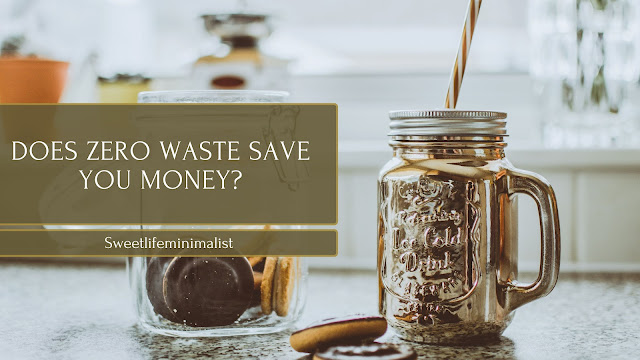Navigating the zero waste journey | Does zero waste save me money
The concept of zero waste often raises questions about its economic feasibility. Many skeptics wonder whether the initial investments in reusable items and sustainable alternatives pay off in the long run. The answer is a resounding yes, but the real key lies in adopting conscious and intentional spending habits.
Conscious and Intentional Spending: What Does It Mean?
Conscious and intentional spending involves making deliberate and well-thought-out choices when it comes to purchasing goods and services. It's about aligning your spending habits with your values, considering the environmental and social impact of your purchases. By adopting this approach, you not only reduce waste but also save money by avoiding unnecessary and impulsive expenses.
Practical Tips for Conscious and Intentional Spending:
Evaluate Your Needs vs. Wants:
- Before making a purchase, ask yourself whether it's a necessity or a luxury. Focus on acquiring items that add value to your life.
Quality Over Quantity:
- Invest in high-quality, durable products that may have a higher upfront cost but offer long-term savings by lasting longer. I’ve found PACT makes great quality clothing at a reasonable price.
Consider Second-Hand Options:
- Embrace thrift stores, online second-hand markets, and community swaps for clothing, furniture, and other items. This not only saves money but also reduces the demand for new production. ThreadUp is a great shop to explore for second hand and new clothing.
DIY and Upcycling:
- Explore do-it-yourself projects and upcycling to breathe new life into old items instead of buying new ones. This not only saves money but also adds a personal touch to your belongings. Wooden lids on your upcycled jars add a nice touch.
Meal Planning:
- Plan your meals in advance, create shopping lists, and buy only what you need. This reduces food waste and ensures you use all your purchased ingredients efficiently.
Bulk Buying:
- Purchase non-perishable items in bulk to reduce packaging and save money in the long run. Bring your own reusable containers to stores that offer bulk options.
Repair Instead of Replace:
- Before discarding broken items, explore options for repair. Fixing appliances, clothing, or furniture can often be more cost-effective than buying new ones.
Borrow or Share:
- Instead of purchasing items that you may only need occasionally, consider borrowing or sharing with friends, family, or neighbors.
Utility Consciousness:
- Save on utility bills by being conscious of energy and water consumption. Turn off lights when not in use, unplug electronics, and consider energy-efficient appliances.
Review Subscriptions:
- Regularly review your subscription services. Cancel or consolidate subscriptions that you no longer need or use.
Examples of Intentional Spending in a Zero-Waste Lifestyle:
Example 1: Reusable Water Bottle
- Instead of buying a single-use water bottle every day, invest in a reusable stainless steel or glass water bottle. This upfront cost is quickly offset by the savings from not purchasing disposable bottles regularly.
Example 2: Cloth Diapers
- While cloth diapers have an initial cost, investing in them can save a significant amount compared to continuously buying disposable diapers over time. Here’s a great small business to support if you are in the market. kinderclothdiapers
Example 3: Homemade Cleaning Products
- Creating your own cleaning products with simple ingredients like vinegar and baking soda not only reduces waste but is also more budget-friendly than buying commercial cleaners.
In essence, zero waste can save money through conscious and intentional spending. By carefully considering the impact of each purchase, individuals can reduce waste, contribute to sustainability, and enjoy financial savings in the process. It's a holistic approach that benefits both the individual and the environment.
Whether you're a single individual or part of a bustling family, the key to a successful zero-waste transition is to start small. Begin by identifying the areas where you generate the most waste. Is it single-use plastic in the kitchen, disposable diapers, or excess packaging in your pantry? Prioritize these areas to maximize the impact of your efforts.
In conclusion, going zero waste on a budget is not only achievable but also rewarding. By embracing a mindset of sustainability and making conscious choices, you can contribute to a healthier planet without straining your finances. Start your journey today, and watch as small changes lead to significant transformations in your lifestyle and the world around you.
Disclaimer: In compliance with ethical blogging practices, please be aware that some links included in this post may be affiliate links. This means that, at no additional cost to you, I may earn a small commission if you click through and make a purchase.
I want to assure you that I only recommend products, services, or resources that I genuinely believe are valuable and relevant. My opinions and recommendations are based on my personal experiences and honest assessments. Your trust is of utmost importance to me, and I strive to provide you with accurate and reliable information.



Comments
Post a Comment